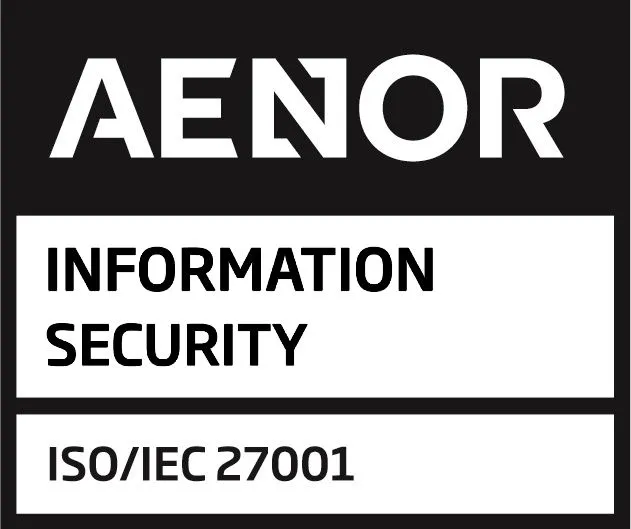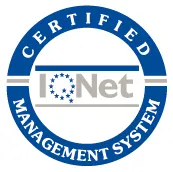
Corporate communication connects strategy and culture, strengthens reputation, and helps companies build trust and grow sustainably.
Table of Contents
This discipline has become essential for organizations that want to project a strong and consistent image. Through strategies that integrate identity, reputation, culture, and relationships with stakeholders, it aligns decisions, channels, and messages in an increasingly digital and global environment. In this article, we will explore its main types and functions, as well as the challenges it faces today.
Corporate communication as the strategic voice of the company
Have you ever wondered how companies build a solid and reliable image for clients, employees, and society? The answer lies in corporate communication, understood as the set of actions and strategies that give coherence to everything an organization communicates.
More than sending isolated messages, corporate communication connects corporate identity, company culture, and reputation with its environment. A financial statement, a sustainability policy, or a press release are not standalone elements: they are part of a common narrative that defines who the company is and what values it represents.
The impact of this discipline is visible in the trust it generates. Harvard Business Review notes that consistency in messages is the foundation of a positive reputation, both at the individual and organizational levels. For companies, this means that every interaction counts, and transparency is a decisive factor in maintaining credibility in global markets.
Corporate communication thus acts as the strategic voice of the company: it articulates what happens inside with what is projected outside, and it helps consolidate long-term trust-based relationships.
Main forms of communication in the corporate environment
How can a company maintain a consistent voice when addressing employees, clients, or institutions? The answer lies in the different forms of corporate communication, which are combined depending on the audience and objectives:
- Internal communication
- Ensures that all employees are aligned with the company strategy.
- Provides teams with access to the information they need.
- Uses channels such as the intranet or internal newsletters.
- A well-structured internal communication plan guarantees that messages reach the right people at the right time, through the right channel.
- External communication
- Projects the company’s value proposition to clients, partners, and the media.
- Includes digital campaigns, press relations, event participation, and actions that enhance brand experience.
- Aims to consolidate market trust and stand out from the competition with clear and consistent messages.
- Institutional communication
- Builds and maintains relationships with public administrations, industry associations, and other stakeholders.
- Often relies on sustainability and corporate social responsibility (CSR) initiatives.
- Strengthens the organization’s legitimacy through transparency reports and responsible policies.
- Crisis communication
- Plays a decisive role in unexpected situations.
- Requires preparation, speed, and transparency.
- Depends on defined protocols and the ability to deliver clear messages under pressure to protect the company’s reputation.
These forms of communication complement each other and adapt to each context. Managing them is not the same in a digitalized company as in an industrial environment, where specific dynamics of corporate communication in blue-collar organizations come into play.
Discover how a corporate communication strategy can transform the way your company connects with people.
Functions that strengthen identity, reputation, and culture
Corporate communication plays a decisive role in how people perceive a company, both internally and externally. Beyond disseminating messages, it helps shape identity, protect reputation, and strengthen corporate culture:
- Reinforcing corporate identity
- Clearly and consistently communicates the organization’s values.
- Helps teams understand what the company stands for and how they are expected to act.
- Example: onboarding programs that present the mission and principles through real stories and shared experiences, connecting new hires with the company’s purpose from day one.
- Protecting reputation
- Every official statement, media relationship, or sustainability campaign is part of the company’s public narrative.
- HR can contribute by integrating employee testimonials into employer branding campaigns or transparently sharing internal policies.
- Strengthening corporate culture
- Sharing collective achievements, publicly recognizing team efforts, and highlighting CSR projects generate pride of belonging.
- These practices increase engagement, improve the workplace climate, and reinforce alignment with strategic objectives.
Key steps to designing an effective communication plan
A well-designed communication plan turns corporate communication into a strategic asset that connects the organization with all its stakeholders. To structure it, follow these steps:
- Analyze the current situation. Review how information flows inside and outside the company, what channels are used, and how messages are perceived by stakeholders. This diagnosis is the starting point for identifying strengths and areas for improvement.
- Define clear objectives. Set goals aligned with the overall strategy: improving reputation, strengthening corporate culture, supporting talent acquisition, or building client and institutional trust.
- Segment audiences. Adapt messages for employees, clients, media, or public institutions. Each group requires a distinct tone and channels to ensure impact and consistency.
- Select the right channels. Combine internal media (such as newsletters or a corporate intranet) with external ones (press relations, social media, sustainability reports). The key is to choose channels that serve the defined objectives.
- Assign responsibilities. Define which departments lead communication and how they collaborate. The communication department usually sets the strategy but must coordinate with HR, marketing, or sustainability teams to ensure coherence.
- Measure and adjust. Establish indicators to evaluate results: participation in internal channels, media coverage, social media engagement, or reputation evolution. Regular reviews ensure the plan remains relevant in changing contexts.
A structured corporate communication plan provides direction, coherence, and consistency. It ensures that every message, whether internal or external, contributes to strengthening identity and projecting trust to all stakeholders.

Challenges of corporate communication in the digital era
Have you ever felt overwhelmed by the number of channels you need to manage to maintain a consistent message? That is one of today’s main challenges in corporate communication: achieving clarity in a saturated media environment.
Transparency is no longer optional: employees and clients expect honest, consistent messages and quickly detect inconsistencies. The Edelman Trust Barometer 2024 shows that trust grows when companies clearly communicate the impact of their decisions and remain consistent across all channels.
Communication is also crucial during digital transformation. Global consultancy McKinsey highlights that change processes succeed only when organizations tell a clear story—what they are doing, why, and what impact it will have—creating commitment and internal alignment.
Moreover, today’s speed of information means mistakes can go viral in minutes. Having crisis communication protocols, trained spokespersons, and rapid response capacity is essential to protect corporate reputation.
The current landscape requires combining consistent messaging, well-defined audiences, and strategic channels that address both opportunities and risks.
Frequently Asked Questions (FAQ) about Corporate Communication
What is corporate communication and why is it important?
Corporate communication is the set of strategies and actions that allow a company to consistently convey its identity, values, and messages. It is important because it strengthens reputation, aligns teams, and builds trust among clients, employees, and society.
What are the main types of corporate communication?
The most relevant types of corporate communication are: internal, external, institutional, and crisis communication. Each serves a different function, but together they ensure coherence across all the organization’s messages.
How do you design an effective corporate communication plan?
An effective corporate communication plan should include: an analysis of the current situation, clear objectives aligned with the global strategy, audience segmentation, selection of appropriate channels, assignment of responsibilities, and metrics to evaluate results.
Corporate communication for a sustainable future
The future of corporate communication will depend on its ability to show how companies generate value beyond financial results. Talking about sustainability, diversity, or innovation is no longer optional: stakeholders want to understand the company’s purpose and how it is reflected in daily actions.
In this context, messages about CSR, diversity projects, or employee well-being initiatives are increasingly relevant. Clear and honest communication about these actions strengthens trust, enhances employees’ sense of belonging, and improves external perception and talent attraction.
Technology will also be an ally. Digital channels, artificial intelligence, and collaborative tools offer opportunities to personalize messages and reach each audience more directly. The challenge is to use these resources without losing consistency with company values or sacrificing closeness.
Well-managed corporate communication helps project a trustworthy and transparent company, capable of inspiring both employees and society. We see this in corporate well-being programs, where communication makes the difference in employee engagement. Applying this logic across all communication dimensions ensures a strong identity, positive reputation, and sustainable company culture.
As we have seen throughout the article, corporate communication is much more than a set of messages: it is how a company conveys its identity, protects its reputation, and consolidates its culture. In an environment where transparency and sustainability are increasingly valued, having a clear strategy makes the difference in attracting talent, building trust, and maintaining internal cohesion.
Every message counts. From an external campaign to an internal announcement, everything contributes to how the organization is perceived. Investing in corporate communication is not just a tactical move, but a strategic commitment to grow solidly and sustainably.
New to Vip District? Contact us and find out what our platform has to offer!








